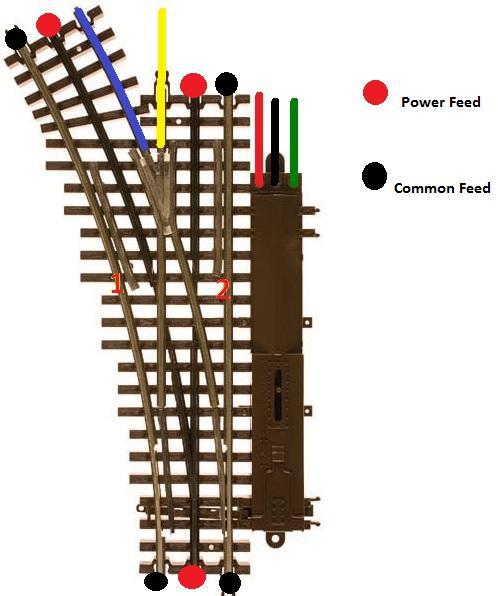Four connections (2) input to the 6924 relay board, and (2) power routing to the dead rails center of switch. I have a Weller 100/140 soldering gun and a Weller D550, (old, and very hot) 250/325 watt soldering gun. The Weller 100/140 should do this project with 60/40 flux core solder. Kester SN60PB40 1.2mm (.050")
(1.) Attempt to clean/or scuff the rail,(bottom flange), where you want to attach solder. Scrape with a small screw driver blade or knife to remove surface material/shine.
(2.) Touch the gun to the bottom flange of the rail where you wish to attach the wire.
(3.) Apply heat and solder until the solder flows out on the rail flange. A concave look is very good. A convex/bead look is poor.
(4.) Remove heat and let cool.
(5.) Apply solder to the tip, (about 1/8" to 1/4"), of the wire to be attach in the same manner as steps (3.) and (4.).
(6.) Holding the wire, with a small screw driver, to the solder, already applied to the rail, reheat the wire/and rail with the soldering gun until liquid. Be careful, too much heat, for too long, will soften the plastic.
(7.) Still holding with the small screw driver, remove heat and let cool until solid.
(8.) When cool test by attempting to remove the wire , cold with a screw driver. A good solder joint should with stand an attempt at mechanical separation.
(2) input wires are non-derail auto-switching. Needs to be an isolated section, check to be sure the small outside rail sections are isolated from the frog. Note the pieces of styrene. Sometimes the small pieces touch the frog which is a problem.


One of the(2) Power Routing wires attached to the dead rail sections of the switch.










